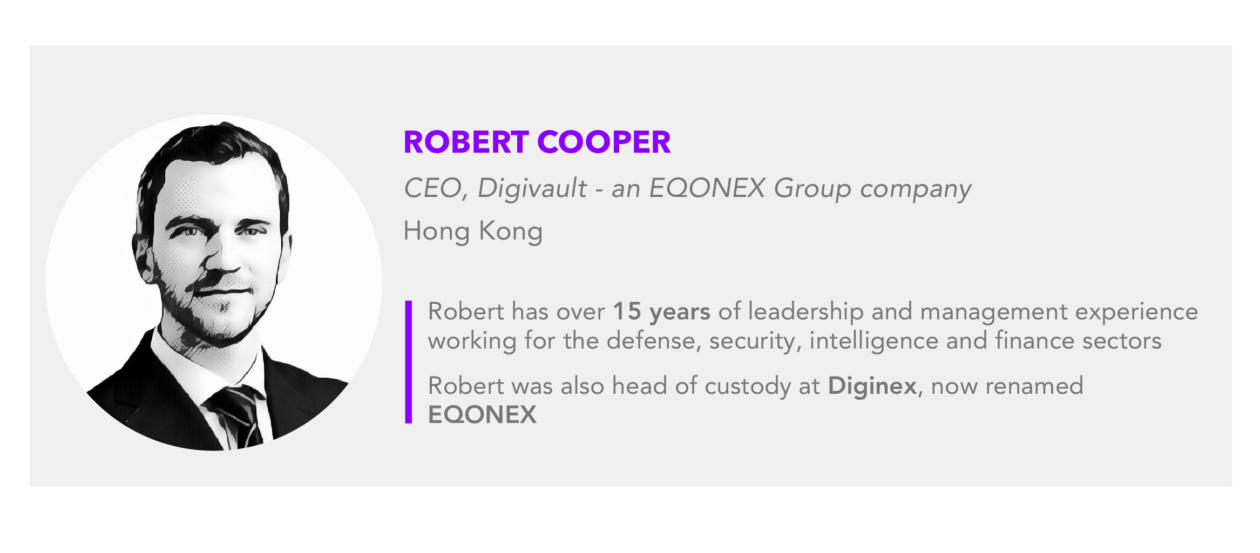Whereas previous Bitcoin price peaks have been largely attributed to individual investors, this time around is markedly different. Banks and financial institutions such as Citigroup and Goldman Sachs are integrating cryptocurrency services for their clients, while corporations, including Tesla and MicroStrategy, have added Bitcoin reserves to their balance sheets.
As a result, there’s been an influx of services touting their institutional credentials in an attempt to woo the incoming crowd of professional newcomers. But what does it really mean to provide an “institutional” crypto service? What do traditional institutions need from such services? Or has the word itself just become overhyped and overused?

Crypto or blockchain?
To understand whether any particular service is fit for institutional service, it’s necessary to consider why the institution decided to procure the service in the first instance. In broad terms, it can be one of two reasons: Firstly, the institution believes there is a client demand for cryptocurrency services, such as the purchase and safe storage of Bitcoin. Secondly, the institution may be pursuing operational efficiencies through using blockchain technology for existing asset classes.
In the first case, the main challenge that banks have faced to date is compliance. As greater clarity and frameworks have been put in place by the regulators, this is now less of an issue. Custodians registered with regulators are available as sub-custodians, or custodial white label products with built-in compliant transaction monitoring can be utilized.
Marrying old and new
A more practical challenge remaining is integration. How can traditional trading systems and operational processes be integrated with the crypto ecosystem of markets and custodians? Traditional platforms use messaging protocols such as Swift and FIX that are not widely supported in the crypto space. So, should new front office to back office platforms be built, or should crypto providers take on support of established messaging protocols?
Different companies are taking different approaches. In many cases, those that are willing to meet the banks where they are will find a competitive advantage. However, it doesn’t necessarily have to involve building compatible services from scratch — collaborations and partnerships can help to provide a bridge from the existing banking infrastructure to the digital asset ecosystem.
Leveraging blockchain for a new financial system
On the second point, of using blockchain to bring operational efficiencies, there are great opportunities to leverage the technology as a way to resolve legacy challenges. These include slow settlement times, reconciliation complexity and communication of corporate events.
In principle, blockchain can overcome many of these issues by tokenizing existing assets, enabling real-time transfers and near-instant global settlement. However, in practice, it comes back to the same question as banks encounter when launching cryptocurrency services — how to implement such a system so that it integrates with existing systems.
Overhauling old infrastructure
Since the overall goal, in this case, is to improve efficiency, bolting a blockchain solution onto existing systems is more likely to reduce rather than increase efficiency. Ultimately, a wholesale replacement rather than an incremental evolution is probably necessary in this case. Each existing database or potential “source of truth” needs to be assessed against the opportunity to replace it with a blockchain ledger.
This means that while the benefits are widely recognized, actually realizing them will involve several giant leaps for institutions. Firstly, there needs to be a firm belief that the benefits will ultimately outweigh the costs — a big enough belief to make the initial investment cost. Establishing this belief will involve at least some first movers proving that there’s a solid business case for a fairly seismic digital transformation.
Once that happens, it’s likely that we will see a snowball effect start to kick in, as the first movers begin to demonstrate competitive advantage through their willingness to take a risk. The good news is that there are some promising signs of movement. Last year, JPMorgan became the first bank to launch its own JPM Coin for payments and settlements within its network. It’s an early proof of concept for the industry and will need more time before it will be deemed a success or otherwise.
In the meantime, the less-transformational change will see institutions continue to adopt cryptocurrency services amid growing demand from their corporate clients. In this case, the most successful will provide a service that integrates as seamlessly as possible into existing operations, making for an uninterrupted customer experience.




